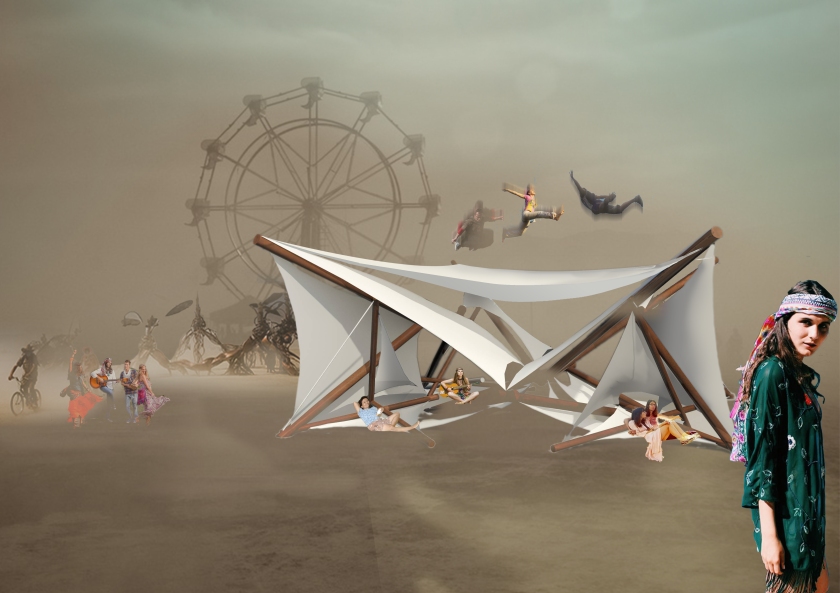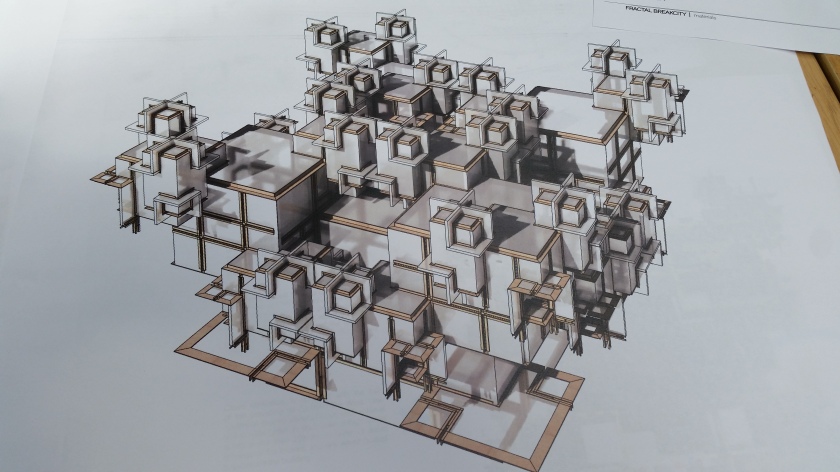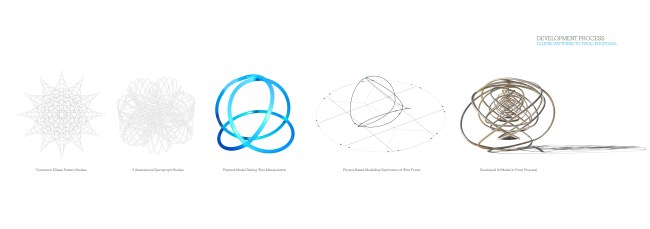


Physical Manifestation of FUN-Tegrity Pavillion
“All Structures, properly understand, from solar system to the atom, are tensegrity structures. Universe is omnitensional tensegrity”, Buckminster Fuller described the tensegrity structure. With the concept of “Fun Circus: Playground in the desert” , the Fun-tegrity Pavillion is a shelter that offers fun and also leisure with the idea of fun palace in the middle of the dead desert – redefining oasis. Flexible, stable and tuneable of membrane tensegrity are advantages to create the fun and leisure based installation and give more means rather than only harps in spaces. The pavilion will capture the essence of dynamic characteristics of the tensegrity structures, by decomposing and altering the basic module of the tensegrity model. This pavilion will has three main functions, which are for shelter, leisure and as a playground . The membrane of the structure will provide shelter from the hot burning sun , and in between the poles of the compression members, hammocks can be installed to provide individual leisure space. On top of the modules combined , there’ll be a trampoline installation, as the playground, where people can jump on it .
It will act as social intervention based on circus arts performances among the strangers and nomad in in the desert, a place where they communicate , have fun and share their talent. With the selected materials , of white membranes, it will contradict with the surrounding site , gracefully prevail in the middle of the dessert .
This year’s theme is about mirrors and masks, mazes and merger. It will be a kind of magic show that takes the form of an old-fashioned carnival. This Carnival of Mirrors asks three essential questions: within our media-saturated world, where prod- ucts and people, consumption and communion morph into an endlessly diverting spectacle, who is the trickster, who is being tricked, and how might we discover who we really are?
Classic carnivals, as theaters of illusion, upheld a very strict dividing line that separated carnies, cast as showmen, from mem- bers of a naïve public who were labeled chumps and suckers, marks and rubes. Our carnival, however, will perform an even more subversive trick — its motto is Include the Rube. The wall dividing the observer from observed will disappear, as by an act of magic; through the alchemy of interaction, everyone at once can be the carny and the fool.

Social Interaction
There had been tensegrity installation before in the history of burning man . But there is no one that people can jump on it . So why not ? People will have fun and express themselves. There will be other smaller modules for other people to be used as shelters . That is the beauty of tensegrity structures . They are flexible and tuneable. This pavilion would not be merely as shelter. In fact, they can play with it or on it ! Fragments of spaces inside of the tensegrity structures, will create some social pods where strangers can hang out and exchanging their creative thoughts . But the most important thing, it will bring people together .


this entry can be access through this student’s website as well ESHAHASHIM©






























































